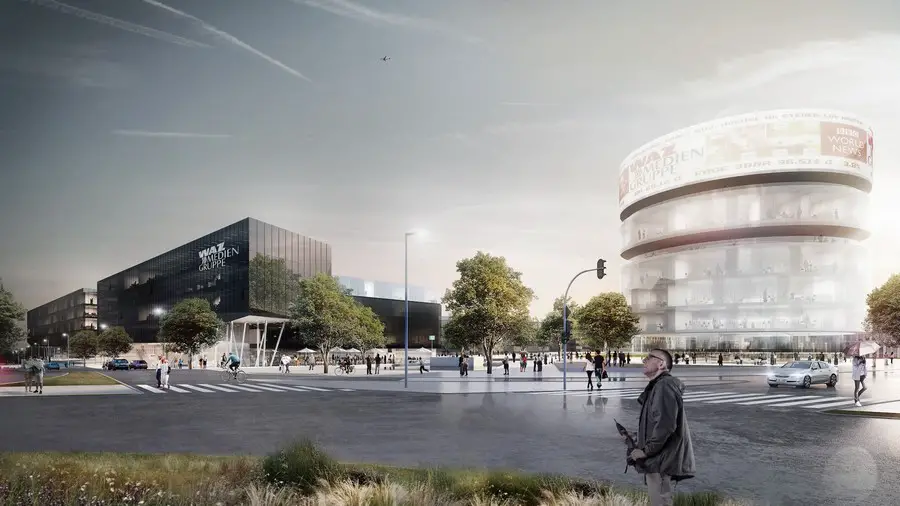Fictive Architecture, Architectural Article, Global Building Design, News, Images
Architecture Fiction : Believable Buildings
Design Discussion – article by Brian Carter, Buffalo, NY, USA
22 Jan 2013
Fiction in Buildings
Facts stranger than fiction?
Architecture originates in fiction – a mix of responses to people, places, things and ideas combined with the beliefs of designers and aspirations of clients – which precedes a building. So the glassy new corporate headquarters for WAZ which promises to hover over Essen, a strangely opaque language centre in Iceland, the showroom designed by Foster to fit into an existing building in New York and a proposed cancer centre planned by Behnisch in space fronting spectacular Swiss nature shown below are, as yet, accessible only through words and images.
Architecture Fiction – Believable Buildings:
WAZ Media Office Essen, Germany
Design: AllesWirdGut
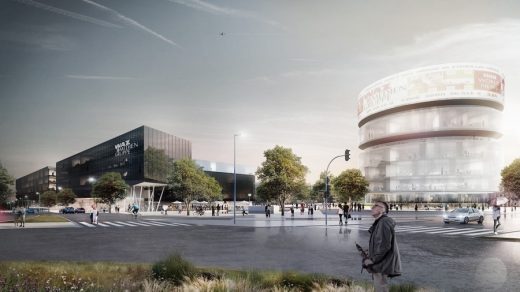
image © AllesWirdGut Architektur
Vigdis Language Center building, Iceland
OOIIO Architecture

image from architect
Porcelanosa Flagship New York Showroom, NY, USA
Design: Foster + Partners
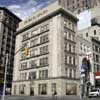
picture : Porcelanosa
AGORA – Cancer Centre in Lausanne, Switzerland – design contest news
Design: Behnisch Architekten

image : Behnisch Architekten
Two other projects included in this newsletter are strikingly different!
Architecture begins with words and images. The words invariably combine professional jargon, advertising, specifications for materials, details of site and descriptions of clients with strange poetics that frequently reference space and light. They are words that create a hazy blur which is then supplemented by images that, though often equally hazy, can be equivalent to a few thousand words!
The two built schemes in this newsletter – a hotel in Portugal and a photographer’s studio in Brazil – are quite beautiful in their stark reality. Elegantly folded boxes set within the dusty landscapes of the Alentejo while minimalist assemblies suggest tantalizing spaces of work in São Paulo.
Studio R São Paulo, Brasil
Architecture: studio mk27 – marcio kogan + gabriel kogan + oswaldo pessano ; Interiors: studio mk27 – diana radomysler
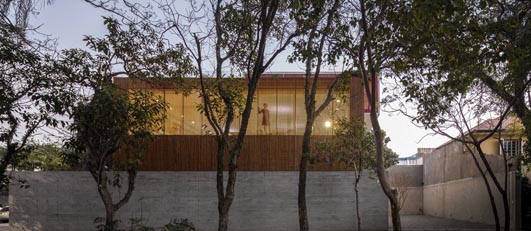
photograph : Fernando Guerra
L´and Vineyards, Alentejo, Portugal – building news
Interiors: studio mk27 – marcio kogan + diana radomysler + suzana glogowski ; Architecture: Promontorio
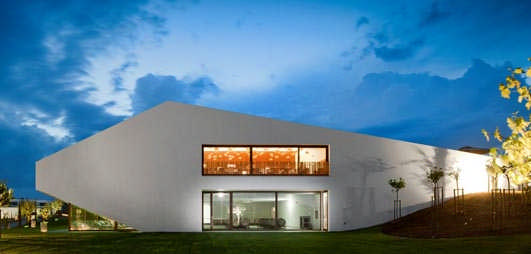
photo : Fernando Guerra
Five world-renowned archi
And yet each of these projects, we discover, is also rooted in a narrative that reads like fiction. One apparently consists of luxury living under the stars, surrounded by vineyards all within a crumbling economy while the other offers startlingly open studios aligned with lavish terraces all secured within gated compounds!
These two projects also have other things in common. The presence of Studio MK27 and the Portuguese language provide links that hint at inspiring collaborations and an alternative cultural axis that connects Europe and South America and confounds those other all too familiar architectural alliances that are sustained by commerce alone.
Brian Carter, a registered architect in the UK, is Professor of Architecture at the University at Buffalo, The State University of New York.

Brian Carter
Comments on this Architecture Fiction article are welcome.
Articles by Brian Carter – Selection
Real Synthetic Architecture – 11 Dec 2012
Old World / New World Architecture – 9 Oct 2012
Performance Architecture – 9 Mar 2010
International Architectural Designs
New York State Architecture Designs
Architectural Narrative : article by Trevor Tucker. Mar 2010
Sustainable Architecture Design : article by Trevor Tucker. Aug 2009
Comments / photos for the Fictive Architecture : Believable Buildings Article page welcome

